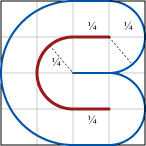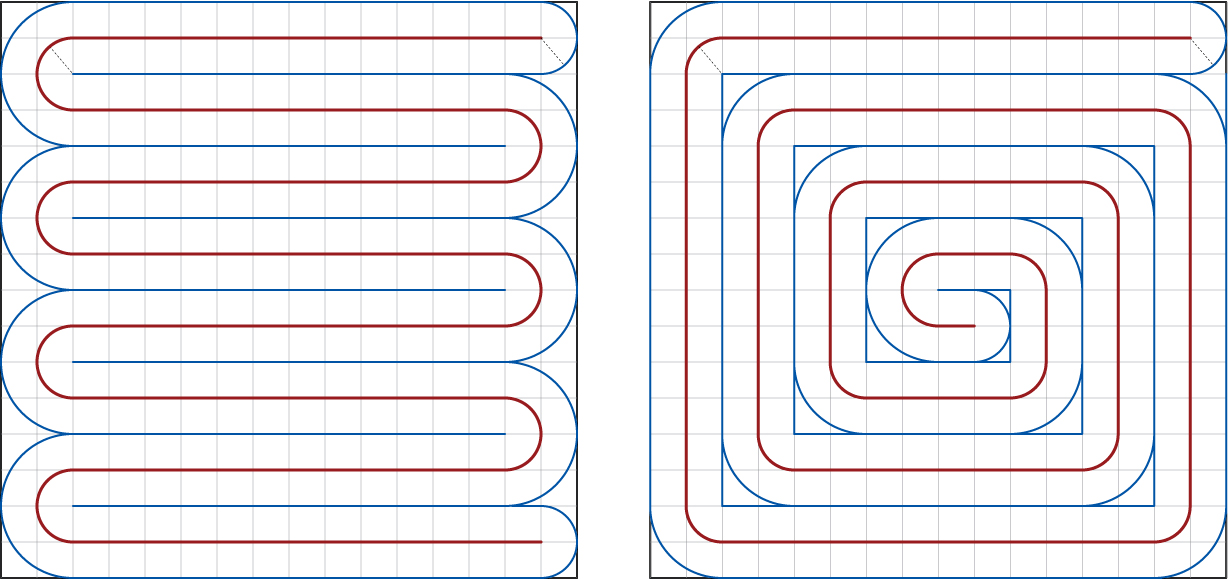What is the longest rope length L of radius r that can fit into a box?
The rope is a smooth curve with a tubular
neighborhood of radius r, such that the rope does not
self-penetrate. For an open curve, each endpoint is surrounded
by a ball of radius r. For a box of dimensions
$1{\times}1{\times}\frac{1}{2}$ and rope with $r=\frac{1}{4}$,
perhaps $L=\frac{1}{2}+\frac{\pi}{4} \approx 1.3$,
achieved by a 'U':

I know packing circles in a square is a notoriously difficult problem,
but perhaps it is easier to pack a rope in a cube, because the
continuity of the curve constrains the options?
(I struggle with this every fall, packing a gardening hose in
a rectangular tub.) I am more interested in general strategies for how to best coil the rope, rather than specific values of L. It seems that if r is large w.r.t. the box dimensions
(as in the above example), no "penny-packing" cross-sectional structure is possible, where one layer nestles in the crevices of the preceding layer.
This is a natural question and surely has been explored, but I didn't find much.
Edit 1. It seems a curvature constraint is needed to retain naturalness: The curve should not turn so sharply that the disks of radius r orthogonal to the curve that determine the tubular neighborhood interpenetrate.
Edit 2 (26Jun10). See also the MO question concerning decidabilitythe MO question concerning decidability.
Edit 3 (12Aug10).
Here is an observation on the 2D version, where a $1 {\times} 1 {\times} 2r$ box may only
accommodate one layer of rope. If $k=\frac{1}{2r}$ is an even integer, then I can see two natural strategies
for coiling the rope within the box:
 $\qquad \qquad \qquad \qquad \qquad$ Red is rope core curve, blue marks the rope boundary.
$\qquad \qquad \qquad \qquad \qquad$ Red is rope core curve, blue marks the rope boundary.
Interestingly, if I have calculated correctly, the length of the red rope curve is identical for the two strategies: $$L = 2 (k-1)[r \pi/2] + 2(k-1)^2 r \;. $$ For $r=\frac{1}{16}$, $k=8$ as illustrated, $L=\frac{7\pi}{16} + \frac{49}{8} \approx 7.5$. (As a check, for $r=\frac{1}{4}$, $k=2$, and $L$ evaluates to $\frac{\pi}{4}+\frac{1}{2}$ as in the first example above.)
